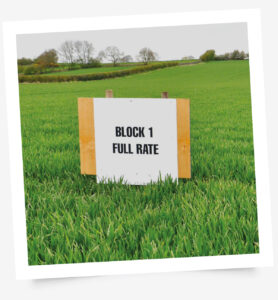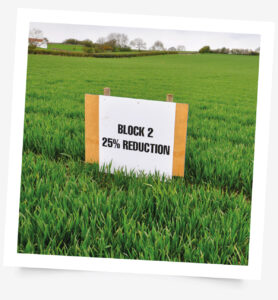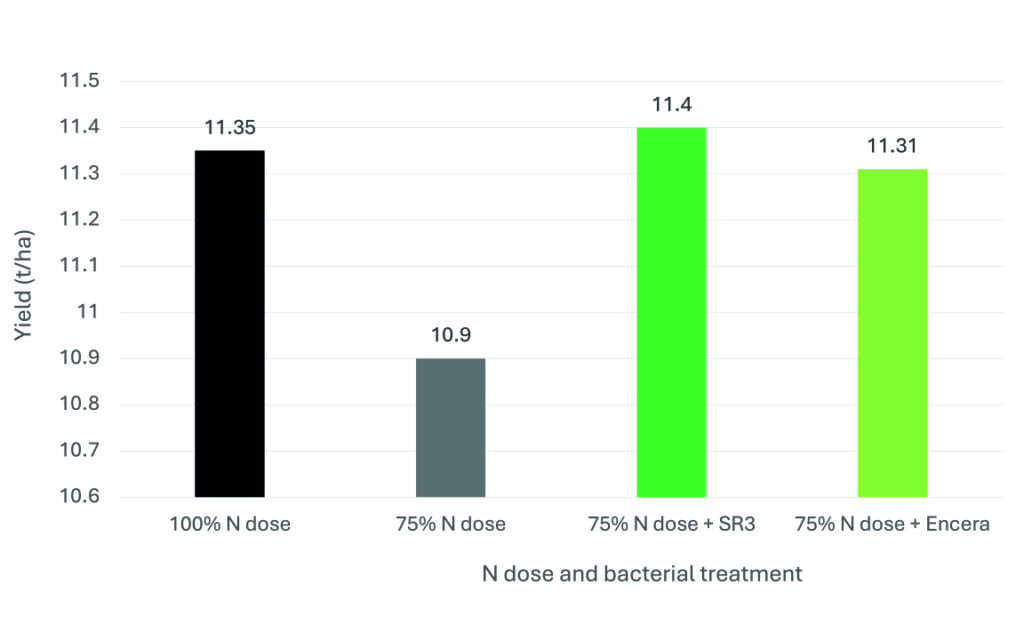Nitrogen efficiency solutions on trial24 January 2024
With other reasons, besides cost, for incorporating alternatives to bagged nitrogen into fertiliser programmes, ProCam trials have put a number of options to the test.
Granular nitrogen (N) prices may have fallen back from their 2021/22 highs, but the aftershock has left a legacy of farmers wanting to use N more efficiently, believes ProCam technical development manager, Rob Adamson. And for good reasons.
“We live in volatile times,” says Rob, “so who’s to say we won’t have another surge in bagged N price. Plus, there are other reasons for looking at more efficient N use and alternative N treatments.
“The first is an insurance for where granular N uptake is compromised – for example in dry soils or crops poorly rooted after a wet winter. Another reason is sustainability and the carbon footprint of traditional N fertiliser.
“It makes sense to not only ensure the traditional N that’s applied works efficiently, but also to use alternatives to support conventional fertiliser where feasible. If end markets want lower carbon footprint produce, these types of solutions may also help towards that goal.”
Initial findings
Initial trial work on bagged N alternatives in winter wheat at ProCam’s flagship research hub at the Stockbridge Technology Centre (STC), Yorkshire, during 2022 yielded encouraging results.
For 2023, the work was extended across the country to investigate how these products might contribute within an N programme. As part of this, a replicated winter wheat trial onfarm in County Durham assessed a range of these alternative N strategies when the farm’s standard 180 kg N/ha programme was reduced. Similar trials were conducted in winter barley at STC and in winter wheat in Cambridgeshire.
”We wanted to see if the treatments could maintain yield if the standard N dose was reduced,” Rob explains. “With the first N dose critical for tiller retention, cutbacks were only made in the second and subsequent doses.
“While the standard 180kg N/ha rate in the County Durham trial yielded 11.35 t/ha, we found that yield fell to 10.9 t/ha when the second and third N inputs were reduced by 25% each to give a total input of 150kg N/ha. Reducing the second and third doses by 50%, to give a total dose of 120kg N/ha, resulted in an even lower yield of 10.66 t/ha. These are major yield reductions, but if the first N dose had been lowered as well, we expect yield would have been impacted much more.”
Our nitrogen efficiency trial at Stockbridge Technology Centre, Cawood.
Potential techniques
Looking at the range of techniques for potentially mitigating reduced traditional N fertiliser use or availability, Rob says there are a number of options. These include: applying products to improve plant uptake of N from the soil through better rooting; applying products to help plants utilise the N they absorb more efficiently; and applying products to provide N to plants in alternative ways.
“The first technique – of improving plant access to soil N through below-ground biomass – is something we have evaluated previously,” he says. “Phosphites and brown seaweed extracts are particularly effective. However, it’s important to build roots while the crop is in its vegetive growth phase, so these solutions sit early in the programme – applied at T0.
“For the second technique, we know that the efficiency with which N is utilised once inside the plant can be limited by several factors. So we looked at how to respond to this, for example by applying pidolic acid, a compound involved in N metabolism.
“In the County Durham work, we found that Twoxo, which contains pidolic acid and specific metabolites, applied at T1 with the 150kg N/ha programme produced a yield of 11.36 t/ha – which was only 0.11 t/ha less than the yield from the full 180kg N/ha programme. When used with the 120kg N/ha programme, the yield was the same as the non-supplemented 150kg N/ha programme – indicating that, by using Twoxo, 30kg of N could be saved.”
Alternative sources
Looking at the next approach – providing N from other sources – Rob says this included the use of N-fixing bacteria, which take atmospheric N and make it directly available to the plant.
SR3, for example, is a soil-based rhizobacteria, he says, which fixes N around the root zone, and about a 5% yield uplift had previously been seen from using it. In 2023, averaged over hybrid barley, conventional barley and wheat, a similar increase was seen, demonstrating its consistency, he notes.
“We also evaluated other bacteria that work slightly differently – notably the exciting endophyte bacteria, Encera.
“Discovered in sugar cane and developed at Nottingham University, the Encera bacteria have a tail, or flagellum, and can move along the leaf surface and colonise the whole plant, fixing N inside the plant’s own cells in a symbiotic relationship. The plant gives the bacteria sugar in return for readily available N.
“Once Encera is in the plant, it moves from leaf to leaf as the plant grows. Having N available directly where needed mitigates the risk of slow N uptake due to dry conditions. This was put to the test in the heat of 2022 when we saw a 7.5% yield improvement from the product in winter wheat at the STC.
“In 2023 at the County Durham site, we also saw a yield benefit in winter wheat when used with the 75% reduced N rate (see chart). In addition, depending on N dose, we also saw between a 6 and 9% yield improvement in the work at STC in barley.
“Overall, there are multiple reasons for considering these various types of alternative N treatments as part of a wider programme. Work continues in ProCam trials for 2024.”


Alternative N products have been evaluated in replicated trials with a range of N fertiliser doses.
Trial results show that using N fixing bacteria treatments could help to bridge the gap to maintain yield if the standard N fertiliser dose is reduced

Source: ProCam winter wheat trial, 2023. Reductions in N dose were made only to the second and third applications in the three input programme; first N dose left as a standard 60kg.
